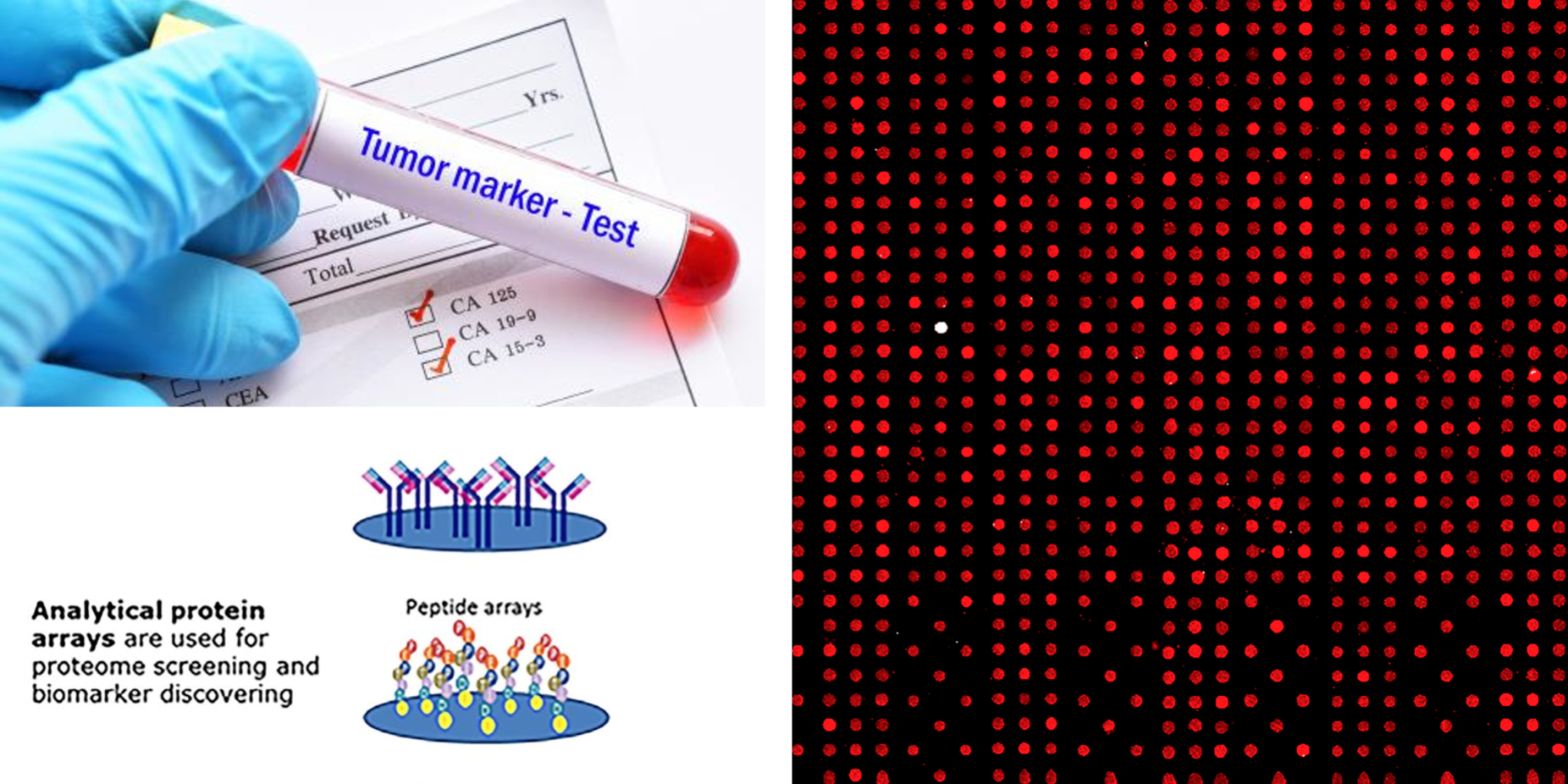Cancer is a complex degenerative disease needing for rapid and precise diagnosis. Cancer disease is characterized by heterogeneous and changing phenotypes continuously progressing through different clinical stages. As a global approach, personalized medicine aims at integrating diagnosis with therapy. To do so, it is necessary to get as much information as possible about patient genetics and phenotype as well as for tumor environment. In this context, protein arrays offer a proteomic approach with rapid and precise protein screening, defining protein signatures and protein-protein interactions.
Looking for protein signatures
In a systemic view, proteins are considered as the molecular effectors of cellular function. In complexes diseases such as cancer, protein expression and activity are perturbed due to diverse mechanisms. Some proteins are either over- or under-expressed in comparison to healthy controls. The National Cancer Institute defines a protein signature as the information about all proteins that are made in blood, other fluids, or tissues, at certain times. Therefore, by identifying those protein signatures associated to disease status, it is possible to design more precise diagnostic tools and improve therapies.
In cancer research, targeted protein arrays allow rapid screening of those proteins involved in cell proliferation, angiogenesis, inflammation, or tumorigenesis. It is also possible to test protein activation by looking at their post-translational modifications such as protein phosphorylation or acetylation. Thus, a single microarray assay can give a global visualization of the whole signaling pathways associated to cancer. In this way, it is possible to use protein microarrays to follow the status of cancer protein signatures over different conditions such as anticancer treatments.
In clinics, when facing complex degenerative diseases such as cancer, time is critical. Early identification of poor-prognosis cases is of high importance to target therapeutic strategies improving survival outcomes. Recently, researchers from the Department of ImmunoTechnology and CREATE Health Translational Cancer Center, at Lund University, used a microarray-based proteome approach to identify the serum biomarkers discriminating metastatic prostate cancer patients from healthy controls. Professor’s Borrebaeck group identified for the first time a serum signature of 69 discriminatory proteins associated to metastatic prostate cancer. This global approach gives new insights to cancer research and serves as basis for new non-invasive diagnostic approaches.
Overpassing technical challenges
Tests based on serum protein signatures are of special interest to build powerful, non-invasive tools for cancer research. To identify protein signatures, it is crucial to test for the maximum number of protein changes over a large cohort of patients. Hence, it is fundamental to use tools that combine specificity with high throughput, such as microarrays. Antibody microarrays allow for multiple, specific and parallel detection of hundreds or thousands of proteins in a single step. This technology reproduces the ELISA technology with the additional advantage of multiplexing and reagent saving. Moreover, protein screening using fluorescent detection shows higher sensitivity and greater dynamic range than chemiluminescence detection. Therefore, better linearity within detection limits is achieved, making signal quantification more accurate. Increased resolution obtained by the high spatial accuracy of the InnoScan scanners improves the multiplex capacity of the assay. This permits to increase the number of probes in a microarray slide, increasing the number of replicate probes and therefore the statistical power of assay.
As a protein expression can vary from fento- to micro-molar concentration on a given factor, the more important challenges of defining protein signatures are sensitivity and dynamic range in order to detect changes of protein expression and activity. Even though signal amplification improves sensitivity to detect weakly expressed proteins, it also narrows signal dynamic range because of saturation of high-expressed proteins. Hence, the real sample dynamic range surpasses the 3 or 4 log dynamic range of detection systems. Innopsys has addressed this problem by including a dynamic range extension (XDR) mode in the InnoScan scanners and Mapix software. The improved dynamic range also enables to distinguish signals that are too close from one another.
Protein microarrays as template of choice for proteomic analyses
Whatever the application of the protein analysis, protein microarrays are the template of choice for many diagnostic applications. Protein microarrays enable the analysis of hundreds of protein interactions with other molecules (nucleic acids, proteins, peptides, hormones, etc) in a single assay. Furthermore, small amounts of samples and reagents are used, reducing assay costs and analysis time.
